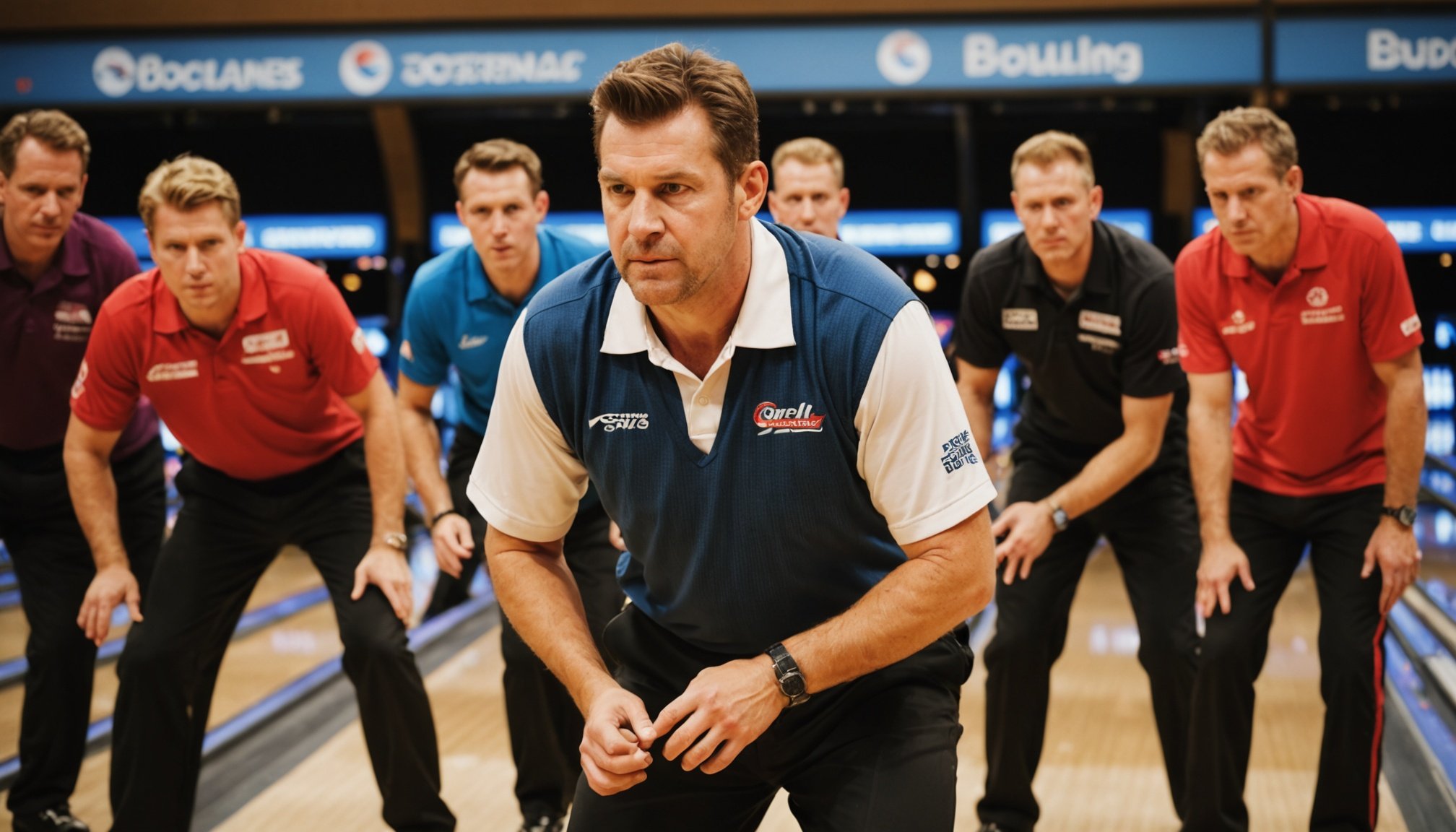Top Stress Management Techniques for Success in Professional Bowling Tournaments
Understanding the Pressure of Professional Bowling
Professional bowling is a sport that demands precision, focus, and mental toughness. The pressure to perform at the highest level can be overwhelming, especially in high-stakes tournaments. Bowlers often face significant stress and anxiety, which can impact their performance and overall well-being.
“Pressure is a natural part of any competitive sport, but it’s how you manage it that makes the difference,” says Mike Shady, a renowned bowling coach. “Bowlers who can handle pressure situations effectively are more likely to perform at their best even under intense scrutiny.”
Also read : Top Techniques for Divers to Perfect Their Entry Skills: Expert Strategies Revealed!
The Impact of Anxiety on Performance
Anxiety and pressure can have a debilitating effect on a bowler’s performance. Here are some key ways in which anxiety can manifest:
- Increased Heart Rate and Physiological Stress: High levels of anxiety can lead to increased heart rate, sweating, and other physiological symptoms that can disrupt the bowler’s rhythm and accuracy[5].
- Mental Distraction: Anxiety can cause mental distraction, making it difficult for the bowler to focus on the task at hand. This distraction can lead to mistakes and a decline in overall performance.
- Self-Doubt and Lack of Confidence: Chronic anxiety can erode a bowler’s self-confidence, making them question their skills and abilities even when they have prepared well.
Effective Stress Management Techniques
To manage stress and perform optimally, professional bowlers employ several techniques:
Additional reading : Top Visualization Strategies to Elevate Your Triathlon Performance Before Race Day
Breathing and Relaxation Techniques
Deep breathing and relaxation techniques are essential for managing stress and anxiety.
- Diaphragmatic Breathing: This type of breathing engages the diaphragm, helping to slow down the heart rate and reduce stress.
- Progressive Muscle Relaxation: This technique involves tensing and relaxing different muscle groups to release physical tension.
### Breathing Exercise Example
1. **Find a Comfortable Position**: Sit or stand comfortably with your back straight.
2. **Inhale Deeply**: Breathe in through your nose, allowing your diaphragm to drop and your belly to rise.
3. **Hold the Breath**: Hold the breath for a few seconds.
4. **Exhale Slowly**: Breathe out slowly through your mouth, allowing your diaphragm to rise and your belly to fall.
5. **Repeat**: Repeat this process several times to calm your mind and body.
Positive Self-Talk and Mental Imagery
Positive self-talk and mental imagery are powerful tools for managing pressure and boosting self-confidence.
- Positive Affirmations: Use positive affirmations to reinforce your self-confidence. For example, “I am well-prepared and capable of performing at my best.”
- Mental Imagery: Visualize yourself performing well and successfully handling pressure situations. This can help build confidence and reduce anxiety.
### Positive Self-Talk Example
1. **Identify Negative Thoughts**: Recognize when you are having negative thoughts about your performance.
2. **Replace with Positive Affirmations**: Replace those thoughts with positive affirmations that reinforce your confidence and abilities.
3. **Practice Regularly**: Practice positive self-talk regularly to make it a habitual part of your mental preparation.
Physical Training and Conditioning
Physical training and conditioning are crucial for managing the physical aspects of stress and improving overall performance.
- Cardiovascular Training: Regular cardiovascular exercise can help improve endurance and reduce stress.
- Strength Training: Building strength can enhance your bowling technique and reduce the risk of injury.
- Flexibility and Mobility: Maintaining flexibility and mobility is essential for maintaining a consistent and accurate bowling form.
| Training Component | Benefits | Example |
|---|---|---|
| Cardiovascular Training | Improves endurance, reduces stress | Running, cycling, swimming |
| Strength Training | Enhances bowling technique, reduces injury risk | Weightlifting, resistance band exercises |
| Flexibility and Mobility | Maintains consistent and accurate bowling form | Yoga, stretching exercises |
Social Facilitation and Team Support
Social facilitation, or the presence of others, can have a positive impact on performance, especially when combined with team support.
- Team Environment: Being part of a supportive team can provide motivation and reduce feelings of isolation.
- Coaching and Feedback: Regular coaching and constructive feedback can help bowlers improve their skills and manage pressure more effectively.
### Social Facilitation Example
1. **Join a Bowling League**: Participate in a bowling league or join a bowling team to benefit from social support and competition.
2. **Work with a Coach**: Engage a coach who can provide personalized feedback and support.
3. **Communicate with Teammates**: Share your feelings and concerns with teammates to get support and advice.
Coping Strategies for High-Pressure Situations
In high-pressure situations, bowlers need specific coping strategies to manage their anxiety and perform optimally.
Active Listening and Nonverbal Communication
Active listening and nonverbal communication can help bowlers stay focused and composed.
- Active Listening: Pay attention to your body language and the feedback from your coach or teammates.
- Nonverbal Communication: Use positive body language such as maintaining eye contact and standing confidently.
### Active Listening Example
1. **Focus on the Moment**: Concentrate on the present moment and the task at hand.
2. **Avoid Distractions**: Minimize distractions by focusing on your breathing and the feedback from your coach.
3. **Use Positive Body Language**: Maintain positive body language to reinforce your confidence and focus.
Task-Oriented Approach
A task-oriented approach helps bowlers stay focused on the immediate task rather than getting overwhelmed by the overall pressure of the game.
- Break Down the Game: Divide the game into smaller, manageable tasks such as focusing on one frame at a time.
- Set Achievable Goals: Set specific, achievable goals for each frame or game to maintain focus and motivation.
“`plaintext
Task-Oriented Approach Example
- Focus on One Frame at a Time: Instead of worrying about the entire game, focus on one frame at a time.
- Set Specific Goals: Set goals such as achieving a certain score in a frame or maintaining a consistent form.
- Celebrate Small Wins: Celebrate small victories to maintain motivation and confidence.
“`: Mastering Stress Management for Optimal Performance
Managing stress and pressure is a critical component of success in professional bowling tournaments. By employing techniques such as breathing and relaxation, positive self-talk, physical training, social facilitation, and a task-oriented approach, bowlers can optimize their performance and handle high-pressure situations more effectively.
“Success in professional bowling is not just about the physical skill; it’s also about the mental toughness and the ability to manage stress,” says Mike Shady. “By mastering these stress management techniques, bowlers can perform at their best even in the most intense competitions.”
In the world of professional bowling, the ability to manage pressure and anxiety is as important as the skill itself. By integrating these techniques into their training and competition strategies, bowlers can enhance their performance, build their self-confidence, and achieve greater success in the sport.






